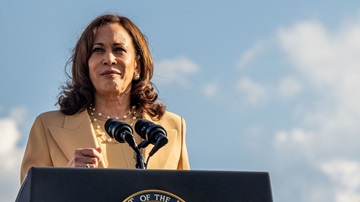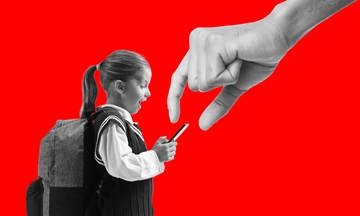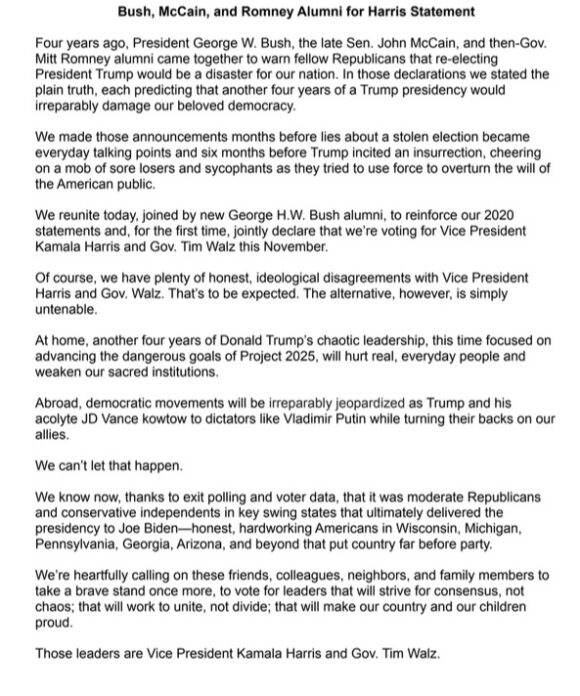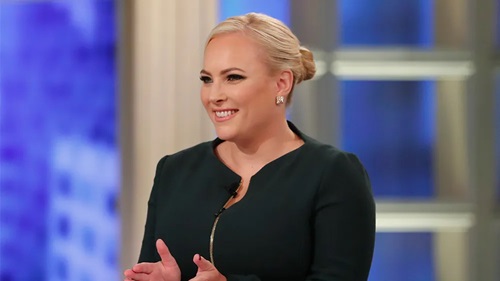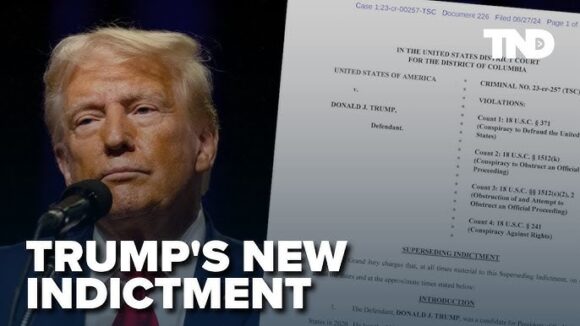
Dear Commons Community,
Special counsel Jack Smith provided the latest development in the 2020 election subversion case against former President Donald Trump, filing a reworked indictment yesterday in Washington, D.C. that he hopes comports with the US Supreme Court’s immunity ruling and will let the case move forward.
The new indictment is 36 pages, down from the original 45 pages. The special counsel did not drop any of the four counts against Trump, but he was forced by the conservative Supreme Court justices to refashion the allegations underlying the charges.
Trump previously pleaded not guilty to the charges, which stem from his attempts to overturn the 2020 election after he lost to Joe Biden resulting in the January 6, 2021, riot at the US Capitol. The new indictment was filed weeks before voters begin casting ballots in the 2024 presidential election, but a trial isn’t expected to happen anytime soon.
Below are takeaways courtesy of CNN.
Tony
———————————————————————–
What’s different and why?
The most glaring difference between the two indictments: prosecutors removed the entire section about Trump’s attempts to weaponize the Justice Department to help his reelection.
And the new indictment no longer mentions “co-conspirator 4,” who was referenced nearly 30 times in the original case and was previously identified by CNN as Jeffrey Clark, a Trump appointee at the Justice Department who embraced his false voter-fraud theories and supported his efforts to use federal law enforcement powers to try to overturn the election.
“Smith removed the allegations about Trump’s use of the Justice Department to perpetrate the scheme since the Supreme Court made clear that those acts were official acts and therefore immune from prosecution,” said Barbara McQuade, a former prosecutor and University of Michigan Law School professor.
CNN legal analyst Elie Honig called the superseding indictment “a strategic retreat by Jack Smith” in cutting the claims relating to the Justice Department.
“The indictment now rests primarily on Trump’s effort to pressure state and local officials and to submit false slates of electors,” Honig said.
Steve Vladeck, a CNN Supreme Court analyst and professor at the Georgetown University Law Center, emphasized that the special counsel did not drop any of the charges themselves.
That, Vladeck said, suggests that prosecutors “are confident” that the law “still encompasses the conduct they allege former President Trump engaged in leading up to and on January 6.”
Trump’s role in election certification
Trump continues to be charged with illegally interfering with state election officials who certify their state’s presidential election results, and of obstructing Congress’ certification of the Electoral College results on January 6.
But the superseding indictment explicitly highlights the fact that the sitting president has no role whatsoever in this quadrennial exercise, neither on the state nor federal level.
The reworked indictment states, “The Defendant had no official responsibilities related to any state’s certification of the election results.” Regarding January 6, it states that “the Defendant had no official responsibilities related to the certification proceeding, but he did have a personal interest as a candidate in being named the winner of the election.”
Neither of those lines were in the original indictment that Smith filed last year.
Trump’s 2020 election rhetoric
Much of the case involves Trump’s words – specifically, his repeated false claims that the election had been “rigged” and “stolen” from him. (Democratic and Republican election officials, Trump’s handpicked attorney general, many of his own advisers, and the nation’s leading cybersecurity agency have all concluded the election was legitimate and secure.)
This adjustment by prosecutors was a reaction to the Supreme Court’s ruling, which commentated on how presidents use social media and speeches to communicate with the public, but didn’t set out a hard-and-fast rule for when those communications are personal conduct.
“The Defendant continued to make false claims nonetheless, with deliberate disregard for the truth, including through his Twitter account,” prosecutors said in the new indictment. “Throughout the conspiracies, although the Defendant sometimes used his Twitter account to communicate with the public, as President, about official actions and policies, he also regularly used it for personal purposes.”
Like the original indictment, the new one quoted from Trump’s incendiary Ellipse speech on the morning of January 6, where he urged his supporters to march to the Capitol and “fight like hell.”
But in Tuesday’s document, prosecutors said that the event was a “campaign speech” and “a privately-funded, privately-organized political rally.”
Trump’s role in post-election lawsuits cited
Another example of how Smith retooled and reworded his indictment revolves around a lawsuit that Trump’s 2020 campaign filed regarding the results in Georgia, which he narrowly lost.
The original indictment said the lawsuit was “filed in his name.” But the new indictment says it was “filed in his capacity as a candidate for President,” explicitly arguing that this solely pertained to his campaign and was wholly removed from his presidential duties.
Trump personally signed a verification swearing that the information in the lawsuit was accurate, even though it contained “false election fraud allegations,” prosecutors wrote.
The right-wing lawyer who advised Trump on that lawsuit, alleged co-conspirator John Eastman, even told Trump’s team beforehand that the filing contained some “inaccurate” information, prosecutors claim.
Why is Mike Pence still in the indictment?
The reworked indictment is a response to the Supreme Court’s divisive ruling on July 1 granting sweeping immunity to Trump. The 6-3 conservative majority ruled that Trump’s interactions with Justice Department officials was entitled to absolute immunity from prosecution.
“The president cannot be prosecuted for conduct within his exclusive constitutional authority,” the Supreme Court wrote. “Trump is therefore absolutely immune from prosecution for the alleged conduct involving his discussions with Justice Department officials.”
Other actions, such as Trump’s interactions with Vice President Mike Pence, were entitled to “presumptive” immunity, but the majority said that lower courts would need to thrash out whether Smith could overcome that presumption and pursue his case. By keeping Trump’s contacts with Pence in the new indictment, Smith is plowing ahead with that part of the case in hopes it will be upheld.
The alleged conspiracy to pressure Pence into overturning the election is a core part of the indictment and a huge part of the 2020 election aftermath. Prosecutors retooled and reframed the section about Trump pressuring Pence to emphasize that, in their view, it was an abuse of power that had nothing to do with the constitutional role of the vice presidency and the normal lawful relationship between a president and vice president.
McQuade said she was “somewhat surprised” to see the allegations remain relating to Trump’s efforts to pressure Pence.
“The court said that this conversation was at least presumptively immune, but that the prosecutor could rebut the presumption,” she said. “It seems that Smith believes he can rebut the presumption, perhaps by framing Pence as acting in his legislative role as president of the Senate rather than in his executive branch role as vice president.”
The Supreme Court left open the possibility that other actions Trump took, such as his interactions with state election officials, might be open to prosecution. The high court didn’t resolve whether any of Trump’s conduct was, in fact, unofficial but rather left it to the trial court considering his case to decide.
“Unlike Trump’s alleged interactions with the Justice Department, this alleged conduct cannot be neatly categorized as falling within a particular presidential function,” the court wrote. “The necessary analysis is instead fact specific, requiring assessment of numerous alleged interactions with a wide variety of state officials and private persons.”
What happens next
Although the charges haven’t changed, Trump must enter a new plea to the superseding indictment. Prosecutors yesterday indicated they would waive a requirement for the former president appear in court.
Meanwhile, expect Trump to continue his strategy of challenging every aspect of the case, especially since the Supreme Court left aspects of the case unresolved.
“Trump still can litigate and then appeal the immunity issue before trial,” Honig said. “There’s no chance this trial happens before the election.”



